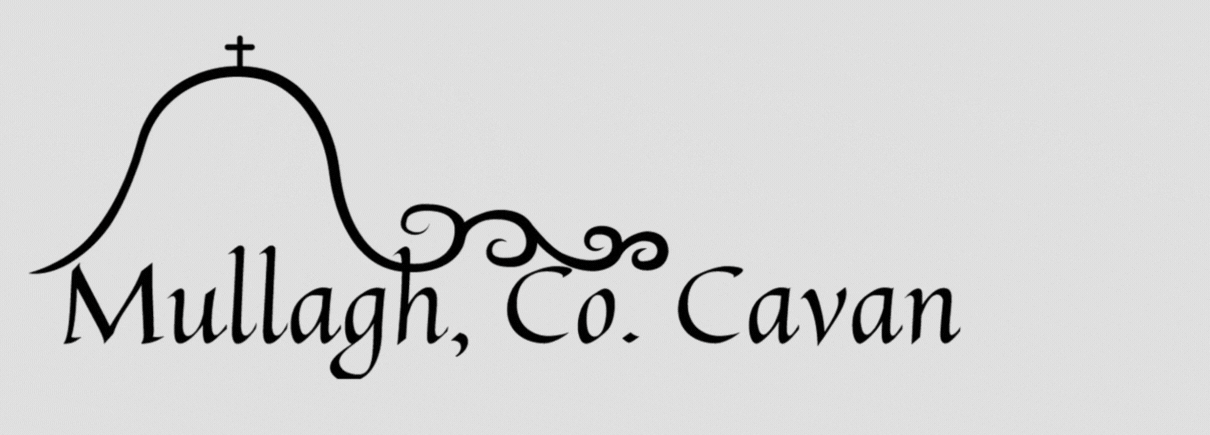Mullagh Lake
Mullagh Lake has an almost circular shape of half a mile in diameter with a maximum depth of 9.5m. It nestles beneath Mullagh Hill, approximately half a mile from the town.
This is a popular pike fishing venue and it holds a stock of good pike with bream and roach also present, and attracts many fishing clubs when they hold their annual competitions.
Tradition has it that the two islands, now known as Crow Island and Sally Island were originally constructed as crannoga. When the water level on the lake is low the stones in the foundation are clearly visible. The trees on the island were planted in the early nineteenth century by the Mortimers, the local landlords.
The word crannog, from the Irish crann, meaning a tree, is the name given to an artificial island built near the shore in a shallow part of a lake from layers of timber, brushwood, stone and clay. Frequently rows of oaken posts were driven into the bottom of the lake to contain the materials. They were dwelling places of the owners of the surrounding land and were very safe places of refuge in time of war.
A third island called Green Island is also interesting as it contains the outlines of two forts or duns. Consequent to the lowering of the water due to drainage this island is now only a peninsula except in very high floods. The name Green Island may have been a literal translation of the Irish word glas-oileán which means a peninsula.
The Carnival by the Lake
Carnivals were a great attraction in the forties and into the late fifties. Practically every town and parish strove to provide the most attractive venue and the most enticing programme. At some of the carnivals there outdoor amusements, bumping cars, swing boats, chair planes, rifle ranges and “beat the wall of death” for those who wished to have a break from the crowded dance floor. But the real dancing fans would remain on the dance floor and enjoy the music played by some of the best musicians in Ireland.
The staging of a carnival required enormous local effort. Skilled men would be required to erect the marquee to comply with the safety regulations of the time. A local man was employed to look after the structure during the night and well into the early hours of the morning. The marquee could be compared to a ship on the sea as it was very much at the mercy of the weather. If there was too much moisture in the canvas it could tear and would create a bigger problem for the following night. Yet, a greater danger was a wind storm.
The Carnival at Mullagh Lake was a memorable occasion, to the point of inspiring a local poet:
On the way to the Carnival
Down Longfield road we’d go
St Kilian’s Well we’d pass
And when at the Gates we were sure to meet
Our loyal friends from Cross
And there upon the Courthouse Hill
The old folk they would stand
And listen to the music
Of those great old Irish bands
Certainly few carnivals can have a setting comparable in terms of scenery and historic atmosphere to that provided by Mr Brady of Mullagh Glebe. The site overlooked the Green Island surrounded by towering trees and sometimes a swan or two nesting in the reeds. Picture Mullagh Hill with its cloak of yellow and green, the lake shore by the road side, the white iron gates and railings, the winding avenue leading to the marquee and the Tricolour on the rooftop, the coloured lights bobbing in the breeze and the sun sinking in the west casting shadows on the waters. It was like a Patrick Kavavagh dream as the band played on. Everyone seemed in jovial mood enjoying the night.
Most band had eight or nine members usually, a piano player, two bass fiddlers, a saxophonist, a clarinet player, drums and a male and female singer. This set created such a beautiful sound that one hoped it would go on for longer.
Among the excellent bands that played in Mullagh then and throughout the country were Stephen Garvey, Dixons, Flying Carltons, Bert Flynn, Bros Walshe, Denis Cronin, Gay McIntyre and others.
Admission was 2/6d and a season ticket was 27 shillings. Dancing hours were from eight to twelve. Foxtrots, slow waltzes, quick steps, tango and old time waltzes were the dances in those years. The Carnival Queen was crowned on the closing night. The children of the parish were not forgotten either and a dance and fancy dress parade on the Sunday afternoon was the highlight for them.
The carnival was a great source of entertainment for the youth mostly in the rural areas and the not-so-young enjoyed the lovely music and song. Carnivals are a thing of the past now, but the memories remain. (Portrait of a Parish, 1988)
